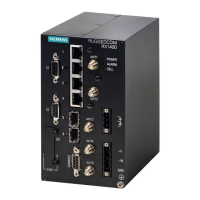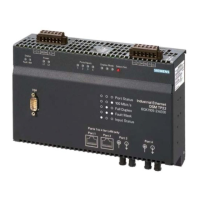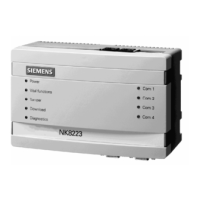RUGGEDCOM ROX II
CLI User Guide
Chapter 13
Unicast and Multicast Routing
Adding an LSP Lifetime Interval 455
Section13.6.9.2
Adding an LSP Lifetime Interval
To add an LSP lifetime interval to an IS-IS area, do the following:
IMPORTANT!
The LSP lifetime interval must be 300 seconds higher than the LSP refresh interval. For more
information about LSP refresh intervals, refer to Section13.6.10, “Managing LSP Refresh Intervals”.
1. Make sure the CLI is in Configuration mode.
2. Add a new interval by typing:
routing isis area name max-lsp-lifetime is-type [ level-1-2 | level-1-only | level-2-only ]
interval seconds
Where:
• name is the unique name for a routing process that belongs to a specific router.
• level is the IS type.
• seconds is the minimum interval in seconds, ranging from 1 to 120. The default value is 30.
3. Type commit and press Enter to save the changes, or type revert and press Enter to abort.
Section13.6.9.3
Deleting an LSP Lifetime Interval
To delete an LSP lifetime interval for an IS-IS area, do the following:
1. Make sure the CLI is in Configuration mode.
2. Delete the LDP interface by typing:
no routing isis area name max-lsp-lifetime is-type [ level-1-2 | level-1-only | level-2-only ]
interval seconds
Where:
• name is the unique name for a routing process that belongs to a specific router.
• level is the IS type.
• seconds is the minimum interval in seconds, ranging from 1 to 120. The default value is 30.
3. Type commit and press Enter to save the changes, or type revert and press Enter to abort.
Section13.6.10
Managing LSP Refresh Intervals
IS-IS retains Link-State Packets (LSP) in the Link-State Database (LSDB) for only a short period of time unless they
are refreshed. By default, LSPs are retained in the LSDB for 1200 seconds (this is referred to as the lifetime of the
LSP) and are refreshed every 900 seconds.
The refresh interval is configurable for each area and routing type in the IS-IS network.

